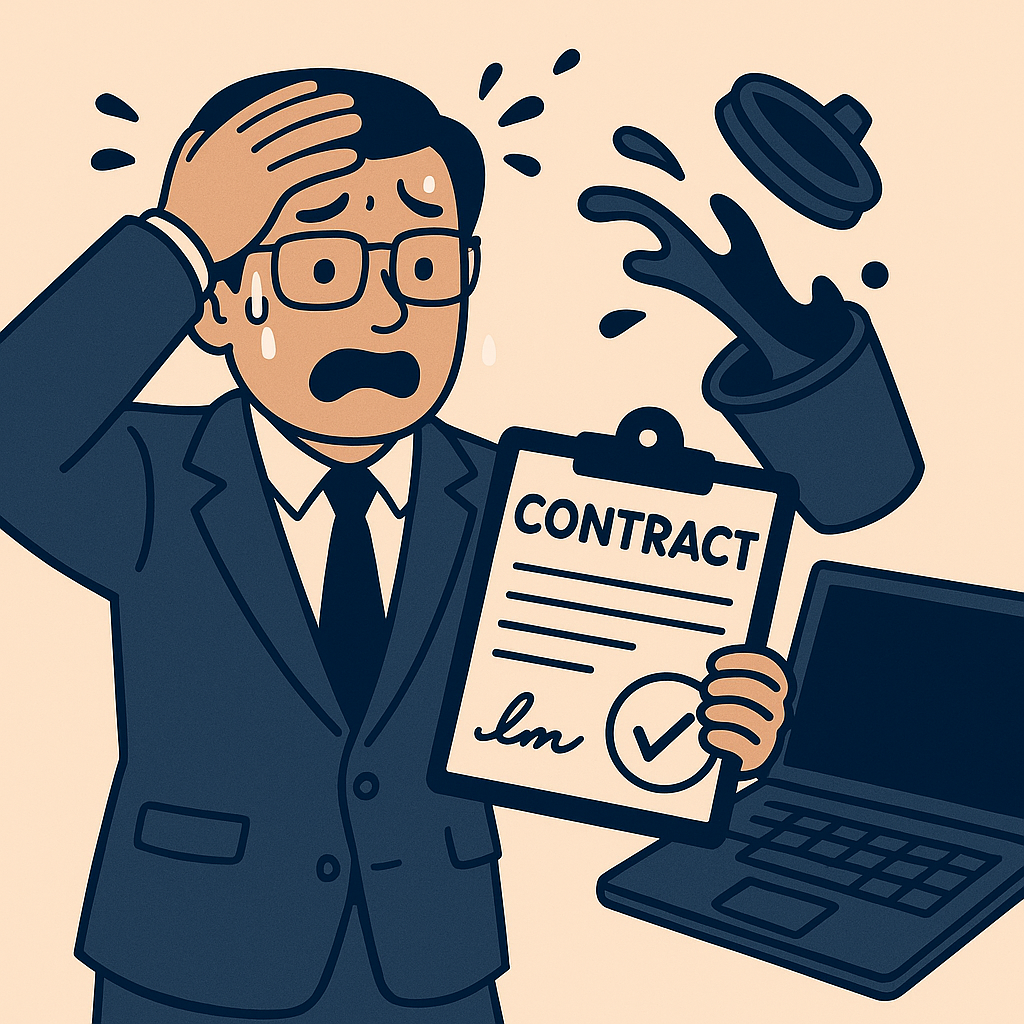When the Unthinkable Happens: Introducing Force Majeure
“Force majeure” is a French term that literally translates to “superior force.” In the context of a contract, it refers to a clause that frees both parties from liability or obligation when an extraordinary event or circumstance beyond their control prevents one or both of them from fulfilling1 their contractual duties. Think of it as a contractual safety valve for genuinely unforeseeable and unavoidable disruptions.
In an era marked by global pandemics, geopolitical instability, extreme weather events (like the typhoons and earthquakes we are mindful of in Taiwan), and other large-scale disruptions, a well-drafted force majeure clause is more important than ever. It’s about allocating risk for events that neither party can reasonably anticipate or prevent.
Core Purpose and Effect: More Than Just an Escape Hatch
The primary purpose of a force majeure clause is to excuse a party from performing its contractual obligations if specific, unforeseen, and uncontrollable events occur. This means that the non-performing party won’t be considered in breach of contract, and therefore won’t typically be liable for damages that the other party might suffer as a result of the non-performance.
However, it’s crucial to note what force majeure often doesn’t automatically excuse. For example, an obligation to pay money is frequently carved out or treated differently, unless the force majeure event directly impacts the payment systems themselves. The specifics always depend on the exact wording of the clause.
Anatomy of a Force Majeure Clause: Key Elements to Understand
While the specifics can vary greatly, most force majeure clauses contain several common elements:
- Defining the “Force Majeure Event”:
- Specific Examples: Clauses usually list specific events that qualify. Common examples include:
- Acts of God (e.g., floods, earthquakes, typhoons, volcanic eruptions).
- War, hostilities, invasion, acts of terrorism.
- Riots, civil commotion, strikes, lockouts (sometimes limited to industry-wide actions, not just a party’s own workforce).
- Government orders, laws, or actions (e.g., expropriation, embargoes, lockdown orders).
- Epidemics or pandemics.
- Fire or explosions (not caused by the party’s negligence).
- Significant failures of public utilities or transportation networks.
- “Catch-All” Language: Many clauses also include broader, more general phrases like “…or any other event or circumstance beyond the reasonable control of the party seeking to rely on this clause.” While this offers flexibility, it can also lead to disputes over interpretation.
- Causation: The party invoking the clause must demonstrate that the force majeure event is the direct cause of their inability to perform their obligations.
- Unforeseeability & Unavoidability: Generally, the event must have been unforeseeable at the time the contract was signed and its consequences unavoidable despite reasonable efforts.
- No Fault/Beyond Control: The event cannot be due to the fault, negligence, or omission of the party claiming force majeure.
- Duty to Mitigate: Even when a force majeure event occurs, the affected party usually has an obligation to take all reasonable steps to mitigate (lessen or minimize) the effects of the event on their ability to perform and to resume performance as soon as possible.
When Disruption Strikes: Procedural Requirements
Invoking a force majeure clause isn’t usually automatic. There are typically procedural steps to follow:
- Prompt Notice: The party affected by the force majeure event must typically provide prompt written notice to the other party. The clause often specifies the timeframe for this notice (e.g., “within 7 days of the occurrence of the event”). The notice should generally detail the nature of the event, its expected duration, and the obligations affected.
- Providing Evidence: The affected party may need to provide reasonable evidence to support their claim that a force majeure event has occurred and is preventing performance.
- Regular Updates: The affected party might also be required to provide regular updates on the situation and their efforts to overcome the event.
The Aftermath: Consequences of Invoking Force Majeure
Once a force majeure clause is validly invoked, several consequences typically follow:
- Suspension of Obligations: The affected party’s obligations covered by the clause are suspended for the duration of the force majeure event.
- Extension of Time for Performance: Contractual deadlines are usually extended by a period equivalent to the duration of the disruption.
- Termination Rights: If the force majeure event continues for a specified, prolonged period (e.g., 60, 90, or 180 days), the clause may grant one or both parties the right to terminate the contract without liability (or with limited liability, such as for payments due for work already performed).
- Cost Allocation: Generally, each party bears its own costs arising from the force majeure event. The clause might sometimes address specific cost implications.
Important Distinctions: What Force Majeure Typically Is NOT
It’s vital to understand that force majeure clauses are not a “get out of jail free” card for any difficulty:
- Economic Hardship: Changes in market conditions, increased costs of materials, or a party finding the contract unprofitable are generally not considered force majeure events unless explicitly and very clearly included.
- Foreseeable Events: If an event was known or should have been reasonably anticipated when the contract was signed, it usually cannot be claimed as force majeure.
- Party’s Own Negligence or Mismanagement: Difficulties arising from a party’s own poor planning, financial mismanagement, or operational failures do not qualify.
Drafting & Reviewing: Key Questions for Your Force Majeure Clause
When looking at a force majeure clause, consider these points:
- ✅ Is the definition of force majeure events clear, and does it include events relevant to your industry and geographical operations (e.g., specific natural disasters for Taiwan)?
- ✅ Are the notice provisions practical and achievable?
- ✅ What are the precise consequences of invoking the clause (suspension, termination, payment obligations)?
- ✅ Does it address how long an event must continue before termination rights arise?
- ✅ Is the duty to mitigate clearly outlined?
- ✅ Is the clause balanced, or does it unfairly favor one party?
What If There’s No Clause?
In the absence of a specific force majeure clause, parties might have to rely on general legal doctrines like “impossibility,” “impracticability,” or “frustration of purpose” (these vary by jurisdiction). However, these doctrines often have very high thresholds to meet and can be much more uncertain than relying on a well-drafted contractual provision.
Navigating the Unforeseen with Clarity
A carefully considered and clearly drafted force majeure clause is a vital tool for managing risk in an uncertain world. It provides a framework for how parties will navigate extraordinary, uncontrollable events, helping to avoid costly disputes and preserving business relationships where possible. Don’t treat it as boilerplate; give it the attention it deserves.
Streamline Your Agreements with WHYFIRM Smart Contracts
Understanding and drafting effective contract clauses like Force Majeure can be complex. At WHYFIRM, our Smart Contract services are designed to bring clarity, efficiency, and security to your agreements. We help you build robust contracts that anticipate potential issues and protect your interests, leveraging technology to simplify the contracting process. Whether you’re drafting new agreements or looking to optimize existing ones, WHYFIRM can help you navigate the intricacies of contract management with greater confidence.

